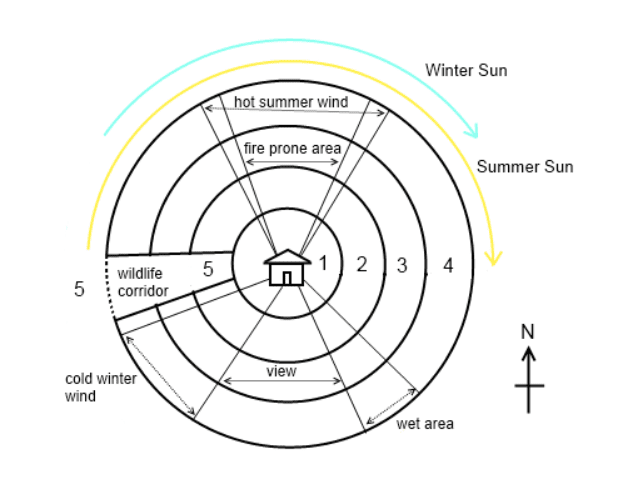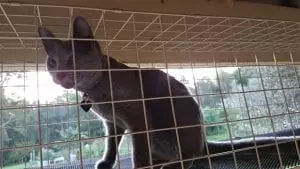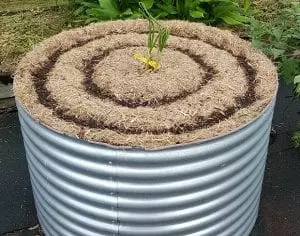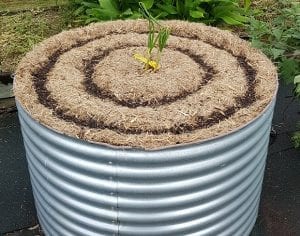The best place to start with permaculture is your own backyard. That might be as small as a paved courtyard or as big as a farm; either way, anyone can put permaculture into practice.
Permaculture is a flexible system that caters for every type of property. It allows you to start small, and build up at your own pace. What permaculture offers is an ethos, some design principles, and a mindset, but it doesn’t exactly have a rulebook you can follow, so at first it can seem a bit confusing. The below diagram showing the 12 permaculture design principles are outlined in more detail in our introduction to permaculture.
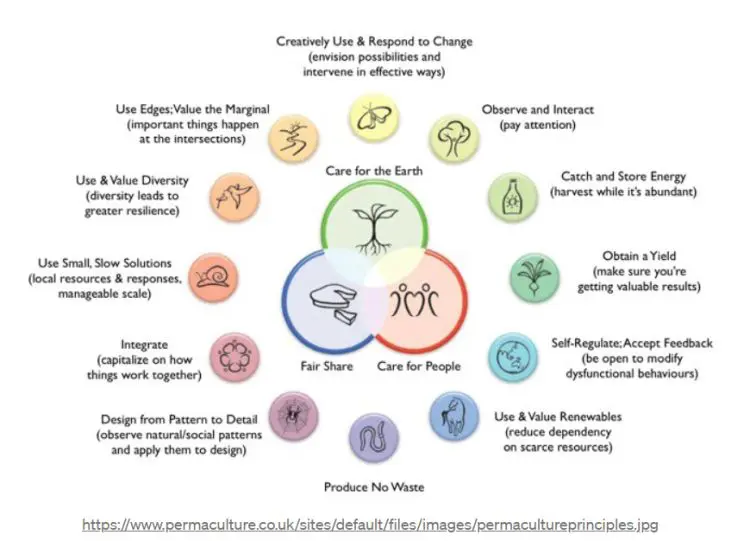
One of the easiest ways to put permaculture into practice is by using the design tool called zoning. Zoning is based on permacultures design principle #4, ‘design from patterns to detail‘. Like most things permaculture, zoning is both scalable and flexible, so it can work for a small townhouse courtyard right up to a large commercial farm.
Zoning is a logical system. It places your propertys design elements according to their frequency of use. So the closer an element is to the house, the more often it will be needed, used and cared for. The things that are required least frequently, or require the least attention, are placed furthest from the house. In this way, the zoning system sets up an energy-efficient site plan. That means not only solar and water energy, but your human energy too!

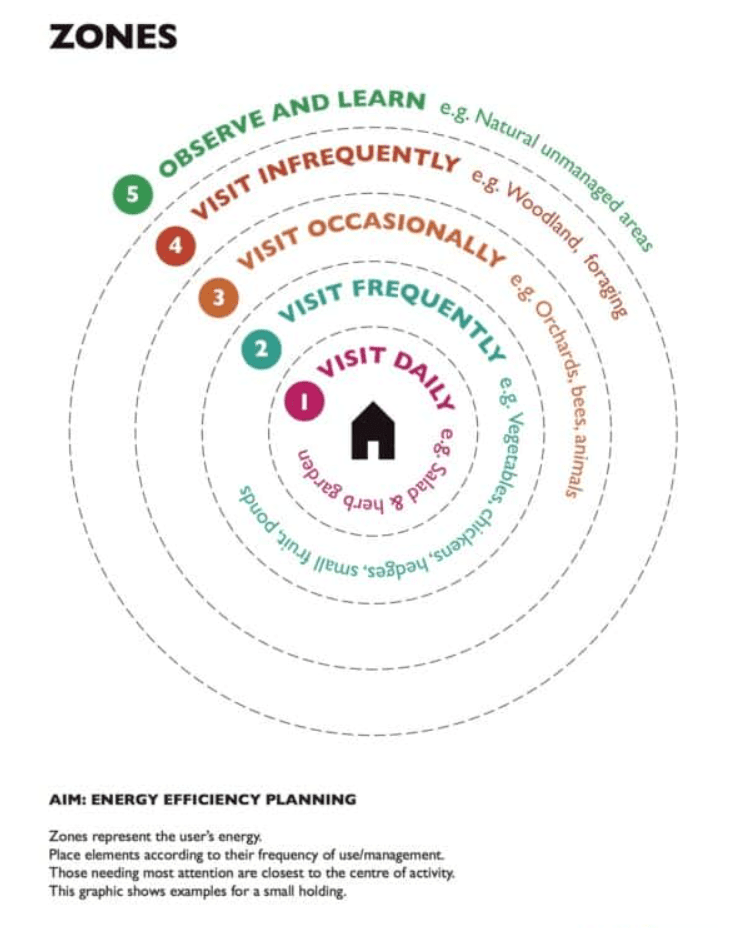
As a practical example, it makes sense to have your most-often used herbs and greens close to your kitchen, so that when you need a little snip of something to add into the dinner, you only need take a few steps to get it. It wouldn’t make sense to have to walk to the remote far corner of your property to do the same. You’re also less likely to maintain and water a kitchen garden that is less visible and further away: things that are further away often feel like a hassle, plus, out of sight, out of mind!
While zoning absolutely works and is definitely practical, bear in mind that it’s a flexible concept rather than a set of rules or a rigid system. You can use as much or as little of it as you want. And in fact most people probably won’t have zones 4 and 5, and that’s fine. Even a 3-acre smallholding may only have zones 1, 2 and 3. The average suburban property might only have a zone 0 and a zone 1.
Let’s have a quick look at each of the zones.
Zone 0– the house itself.
Zone 1– areas surrounding the house that are accessed most often. This zone is defined more by access than proximity. Here you may have things like a small kitchen garden on the patio or a herb bed just outside the kitchen door. Rainwater tanks, a worm farm or perhaps a greenhouse could be in zone 1. Zone 1 is characterised by intensive systems which would fail without continual human attention.
Zone 2– contains elements that need frequent attention, but less than zone 1. You might have fruit trees, larger garden beds and a compost system here. A suburban yard would have a chicken coop in this zone.
Zone 3– things which require even less attention, such as livestock grazing, larger orchards and growing space.
Zone 4– a part wild/partly manged zone. Usually made up of forested pastures and food foraging areas. For larger properties.
Zone 5– unmanaged areas. This could be a creek, a river, a densely forested area, or similar.

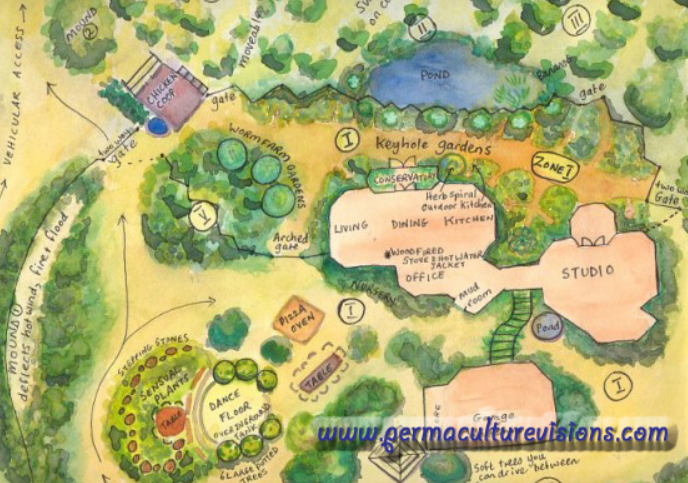
Now bear in mind, these zones are not circular in reality; that’s just a general diagram. Most of us buy a property with a house and many elements already in place. It’s perfectly okay to have zones with odd shapes…in fact it’s quite normal!
Permaculture can also help you design your energy management systems by using sector planning. Sector planning is a system of designs that plan for the energies external to your site. Things like sun, wind, and water are what they mean by this. Sector planning allows you to put elements in place to harness the best of these natural energies, while avoiding damage by any of them.
By placing plants, trees or structures in the appropriate areas, you can optimise the use of energy on your property by:
- Blocking the incoming energy where necessary
- Channelling the incoming energy for our intended use
- Opening the area to allow the incoming energy in
A sector diagram maps the way wind, sun and water interact with your property. The below diagram is for the southern hemisphere, with the sun to the north. The sun paths are shown, as well as the other key energies, wind and water. See how the zone 5 wildlife corridor extends into zone 1? This is a good example of the flexibility of zone design.
Each sector indicates one of the external energies discussed above, like sun, wind, water or fire. Each of these energies is represented as a wedge shape, radiating out from the centre of activity, the home.
So, in summary, you can use sector planning in your design to manage the incoming wild energies moving through the site. With the strategic placement of elements in our design, we can block, channel, or open up access to these natural energies.
Together, zone planning and sector planning cover the management of energy inside the site and external energies flowing through the site respectively.


